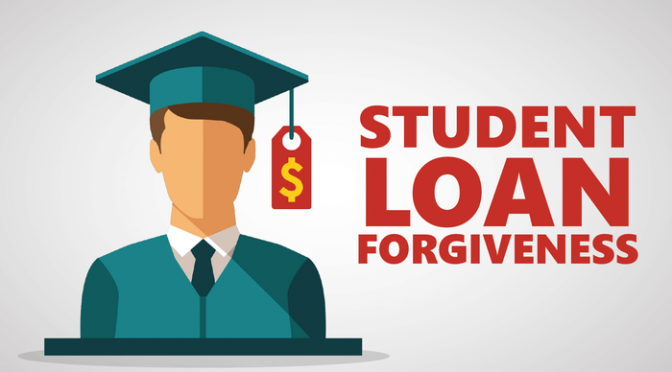Robert Kelchen, Seton Hall University
The first group of borrowers who tried to get Public Service Loan Forgiveness – a George W. Bush-era program meant to provide relief to those who went into socially valuable but poorly paid public service jobs, such as teachers and social workers – mostly ran into a brick wall.

Of the 28,000 public servants who applied for Public Service Loan Forgiveness earlier this year, only 96 were approved. Many were denied in large part due to government contractors being less than helpful when it came to telling borrowers about Public Service Loan Forgiveness. Some of these borrowers will end up getting part of their loans forgiven, but will have to make more payments than they expected.
With Democrats having regained control of the U.S. House of Representatives in the November 2018 midterm elections, the Department of Education will likely face greater pressure for providing better information to borrowers, as it was told to do recently by the Government Accountability Office.
The Public Service Loan Forgiveness program forgives loans for students who made 10 years of loan payments while they worked in public service jobs. Without this loan forgiveness plan, many of these borrowers would have been paying off their student loans for 20 to 25 years.
Borrowers must follow a complex set of rules in order to be eligible for the Public Service Loan Forgiveness program. As a professor who studies federal financial aid policies, I explain these rules below so that up to 1 million borrowers who have expressed interest in the program can have a better shot at receiving forgiveness.
What counts as public service?
In general, working for a government agency – such as teaching in a public school or a nonprofit organization that is not partisan in nature – counts as public service for the purposes of the program. For some types of jobs, this means that borrowers need to choose their employers carefully. Teaching at a for-profit school, even if the job is similar to teaching at a public school, would not qualify someone for Public Service Loan Forgiveness. Borrowers must also work at least 30 hours per week in order to qualify.
What types of loans and payment plans qualify?
Only Federal Direct Loans automatically qualify for Public Service Loan Forgiveness. Borrowers with other types of federal loans must consolidate their loans into a Direct Consolidation Loan before any payments count toward Public Service Loan Forgiveness. The failure to consolidate is perhaps the most common reason why borrowers who applied for forgiveness have been rejected, although Congress did provide US$350 million to help some borrowers who were in an ineligible loan program qualify for Public Service Loan Forgiveness.
In order to receive Public Service Loan Forgiveness, borrowers must also be enrolled in an income-driven repayment plan, which ties payments to a percentage of a borrower’s income. The default repayment option is not income-driven and consists of 10 years of fixed monthly payments, but these fixed payments are much higher than income-driven payments. The bottom line is it’s not enough to just make 10 years of payments. You have to make those payments through an income-driven repayment plan to get Public Service Loan Forgiveness.
Parent PLUS Loans and Direct Consolidation Loans have fewer repayment plan options than Direct Loans made to students, so borrowers must enroll in an approved income-driven repayment plan for that type of loan. Borrowers must make 120 months of payments, which do not need to be consecutive, while enrolled in the correct payment plan to receive forgiveness.
How can borrowers track their progress?
First of all, keep every piece of information possible regarding your student loan. Pay stubs, correspondence with student loan servicers and contact information for prior employers can all help support a borrower’s case for qualifying for Public Service Loan Forgiveness. Unfortunately, borrowers have had a hard time getting accurate information from loan servicers and the Department of Education about how to qualify for Public Service Loan Forgiveness.
The U.S. Government Accountability Office told the Department of Education earlier this year to improve its communication with servicers and borrowers, so this process should – at least in theory – get better going forward.
Borrowers should also fill out the Department of Education’s Employment Certification Form each year, as the Department of Education will respond with information on the number of payments made that will qualify toward Public Service Loan Forgiveness. This form should also be filed with the Department of Education each time a borrower starts a new job to make sure that position also qualifies for loan forgiveness.
Can new borrowers still access Public Service Loan Forgiveness?
Yes. Although congressional Republicans proposed eliminating Public Service Loan Forgiveness for new borrowers, the changes have not been approved by Congress. Current borrowers would not be affected under any of the current policy proposals. However, it would be a good idea for borrowers to fill out an Employment Certification Form as soon as possible just in case Congress changes its mind.
Are there other affordable payment options available?
Yes. The federal government offers a number of income-driven repayment options that limit monthly payments to between 10 and 20 percent of “discretionary income.” The federal government determines “discretionary income” as anything you earn that is above 150 percent of the poverty line, which would translate to an annual salary of about $18,000 for a single adult. So if you earn $25,000 a year, your monthly payments would be limited to somewhere between $700 and $1400 per year, or about $58 and $116 per month.
These plans are not as generous as Public Service Loan Forgiveness because payments must be made for between 20 and 25 years – instead of 10 years under Public Service Loan Forgiveness. Also, any forgiven balance under income-driven repayment options is subject to income taxes, whereas balances forgiven through Public Service Loan Forgiveness are not taxed.![]()
Republished with permission under license from The Conversation.


